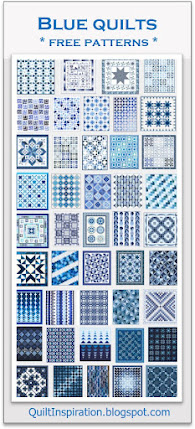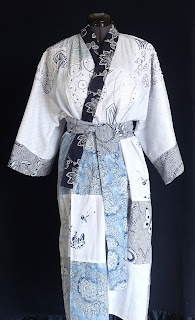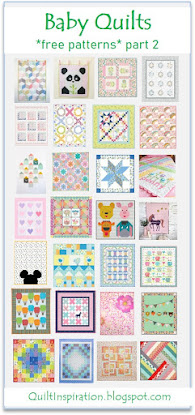Here are some photos from a special exhibit by members of Studio Art Quilt Associates (SAQA) at the International Quilt Festival. The participating artists were encouraged to explore a corner of the world at high magnification, capturing tiny wonders at the microscopic level. We hope you enjoy our photos!*
Please check out our E-Bay shop for great bargains on patterns and vintage collectibles. For continuous free quilt patterns, please visit us on Twitter.
DNA, 38 x 35", by Margaret Lowers Abramshe (Utah)
Margaret Abramshe says: "DNA is the carrier of genetic information. This portrait of my grandson playing with a tub of water collides with the image of the double helix which carries genetic instructions. Deoxyribonucleic acid is the scientific name of the molecule which determines the development, function, growth, and reproduction of all organisms. It’s the unseen roadmap of human development. As many grandparents experience, I see so much of his mother in this little boy. Everything from his physical traits to his intellectual curiosity. These observations confirm the role of that miracle of nature, DNA."
Zara Zannettino says, "Fluorescent microscopy is often used to reveal the form and function of a human cell’s organelles. One organelle, the mitochondrion, is unusual as it contains its own DNA. This means it can replicate independently when more energy is required by the cell. In contrast to chromosomal DNA, which originates from both parents, the mitochondrial DNA is derived only from the mother. This has enabled geneticists to trace all humans to a common ancestral mother. Therefore, despite our vast physical and cultural diversity, each person is related through an unbroken female line of mitochondrial inheritance. This amazing “invisible connection” binds us all together."
Zara created this piece with cotton, cord, and glass and plastic beads. Techniques included dye discharge, raw-edge fabric collage, free motion quilting, couching, trapunto quilting, beading and hand embroidery.
Coagulation, 39.5 x 30.5", by Debra E. Shaw (Ohio)
Debra Shaw says: "What happens when you prick your finger with a pin or needle while sewing? You have red blood cells and platelets floating around in your bloodstream. When you prick your finger, this puts a hole in one or more small blood vessels and you start to bleed. When the platelets discover the holes, they shoot out fibrin strings. These strings cling to the red blood cells and quickly form a clump of red blood cells, fibrin, and platelets. This clump blocks the hole and seals it shut so no more red blood cells can escape. All, hopefully, before you get blood on your fabric."
Intensify, 47 x 33", by Donna Lee Rice (Oregon)
Donna Lee Rice says, "In researching online images of items under magnification, I realized that there were several common shapes: circles, bubbles, and strands. Using the circle and strand shapes, I created this abstract piece. I then quilted the bubble and liquid movement throughout." The beautiful fabrics were hand dyed, fused, cut, and machine quilted.
Chrysophyta, 33 x 29", by Gretchen Brooks (Florida)
Gretchen Brooks says: "The term Chrysophyta is a biological category that includes microscopic aquatic organisms known as diatoms, which have cell walls made of silica. These walls have unique and beautiful translucent geometric patterns. Diatoms are one of the most important aquatic organisms, serving as the base of the food chain, removing CO2 from the air, and releasing oxygen. Their crushed silica shells, sometimes called diatomaceous earth, are used in filters, insulation, abrasives, paints, nail polish, sound proofing, and as a base in dynamite. Their sharp, abrasive property can also be used as a natural insecticide. But to me, as a former biology professor, they are simply stunningly beautiful."
*Image credits: Photos were taken by Quilt Inspiration at the 2022 International Quilt Festival in Salt Lake City, Utah.






















You always manage to find something creative to inspire us all. Happy new year!
ReplyDelete